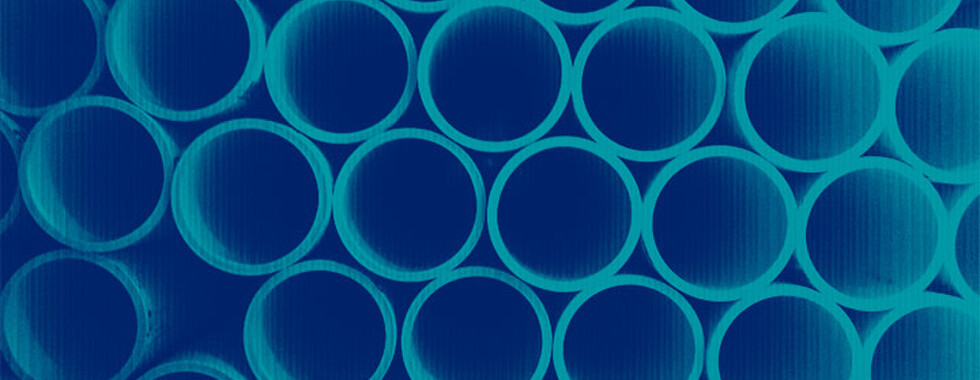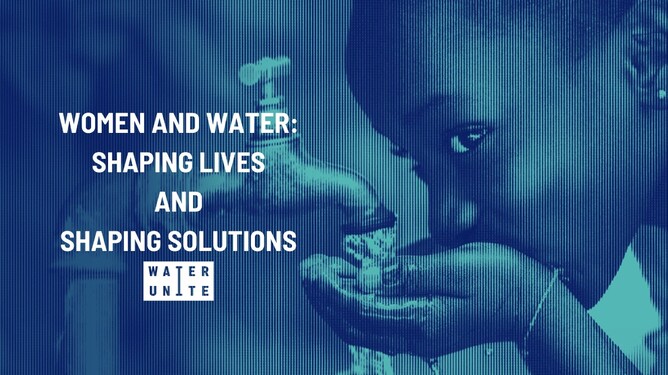Beyond the physical scarcity of water, the global water crisis has revealed a long-standing gender disparity. While millions suffer, women and children are disproportionately burdened. Women, particularly those from poor and marginalised groups, bear the brunt of this crisis – even though they are also often excluded from the management and governance of this precious resource (1).
In 2023, an estimated 380 million women and girls in 26 countries live in a context of high or critical water stress (2). By 2030, the number is projected to rise to 471 million women and girls in 29 countries (2). They spend their days collecting water - sacrificing education, work and even their safety due to the lack of basic sanitation facilities (2). As water scarcity grows, so will gender inequality (2). Women and girls in water-poor households, who already spend a large amount of time travelling long distances to collect water for their families, will face even greater hardships (2). This absence of WASH (Water, Sanitation, and Hygiene) provision exposes them to a cycle of illness, vulnerability, and restricted potential.
While access to clean water and adequate sanitation facilities remains a challenge for nearly 2 billion people, the burden falls disproportionately on women and girls (3). A stark gender gap exists in water collection. Women and girls aged 15 and above are twice as likely as men to be responsible for fetching water in households lacking on-site supplies (3). This disparity extends to younger girls as well, with a higher percentage tasked with this burden compared to boys (3).
The UNESCO Programme for Gender Equality defines gender equality as providing equal opportunities for men and women, girls and boys, to fully participate in society's development and realise their potential (1). However, around the world, girls and women spend an estimated 200 million hours every single day collecting water, restricting their ability to thrive and contribute to society (4). Furthermore, the long journeys to distant water sources expose them to physical harm and safety hazards, limiting their well-being and development (3)
The lack of access to private sanitation facilities for over half a billion individuals significantly impacts women and girls' privacy, dignity and safety. This is particularly concerning during menstruation, hindering proper menstrual hygiene management. Inadequate WASH services disproportionately affect the health of women and girls (3). The absence of private washing facilities in many regions increases their vulnerability to diseases due to their domestic duties, which often involve cleaning, food preparation, and caring for the sick (3). The World Health Organisation (WHO) highlights the knock-on effect that women’s health and well-being has on their families, communities and society as a whole (1).
Women’s poor health and malnutrition affects not only their own generation, but also the following generations, perpetuating a vicious cycle of inequality. Therefore, addressing water scarcity and its disparate impact on women is critical not only for gender equality, but also for overall societal development and well-being.
However, while women are disproportionately affected by the water crisis, they also possess the knowledge and skills to be central to the solution (1). In rural developing areas, women traditionally hold the critical role of managing domestic water resources at the local level. They make crucial decisions about where and how water is collected, how much is needed, and how it's used within the household. This knowledge is a valuable insight gained through personal experience, shared wisdom from other women within the community, and passed down through generations (1). With this in mind, women and girls must be empowered to play a central role in designing and implementing WASH solutions, ensuring the services effectively respond to their specific needs.
The transformative effect that women can have on the water crisis is illustrated by the Bundelkhand, a water-deficient region of UP-Madhya Pradesh India (5). Drought is common in its six districts, with women being the worst affected, as they are most likely to bear the responsibility of fetching water (5). However, a volunteer network of around 1,000 women across the region, named ‘Jal Sahelis’ (Friends of Water) are counteracting this by using their knowledge and expertise to rehabilitate and revive water sources (6).
Together, these women have transformed their communities, building 450 check dams and 56 lakes and reducing the water crisis in over 100 villages in Bundelkhand (5). The availability of water has made life easier for these villagers, as water is now available for domestic and agricultural purposes. Women spend less time fetching water, have more privacy when bathing, and can avoid the caste fight over common village wells (6). Their work has also had a greater economic impact, with improved agriculture alleviating poverty in many households. Farmers who previously struggled to harvest even one crop per year can now harvest two, and in some cases three crops, thanks to adequate irrigation water (6). The Jal Sahelis are a testament to the life-changing power of women’s engagement in community development.
Water Unite is committed to empowering women by investing in programs, projects and businesses that engage women to be pivotal players in WASH solutions. Sustainable solutions that value their knowledge can be leveraged to not only benefit communities in terms of water supply and sanitation, but also empower women to reduce gender disparity, improve health, increase security and help to make them financially independent.
Bibliography
1. Women and Water an Ethical Issue. Aureli, Alice and Brelet, Claudine. 2004, Water and Ethics.
2. Azcona, Ginette, et al. From Commodity To Common Good: A Feminist Agenda to Tackle the World's Water Crisis. New York : UN Women, 2023.
3. United Nations Children’s Fund (UNICEF); World Health Organization (WHO). Progress on household drinking-water, sanitation and hygiene 2000-2022: Special focus on gender. 2023.
4. UNICEF. UNICEF: Collecting water is often a colossal waste of time for women and girls . 2016.
5. Bajpai, Namita. An oasis of hope in parched Bundelkhand. The New Indian Express. [Online] 17 January 2021. [Cited: 10 April 2024.] https://www.newindianexpress.com/nation/2021/Jan/17/an-oasisof-hopein-parched-bundelkhand-2251115.html.
6. Tiwari, Sadhika. Women Who Fought Drought: The Story of Jal Sahelis in Parched Bundelkhand. The Quint World. [Online] 22 March 2022. [Cited: 10 April 2024.] https://www.thequint.com/climate-change/women-who-fought-drought-the-story-of-jal-sahelis-in-parched-bundelkhand-3#read-more.
Author: Amelia Metcalf
Editor: Charlotte Macdonald

